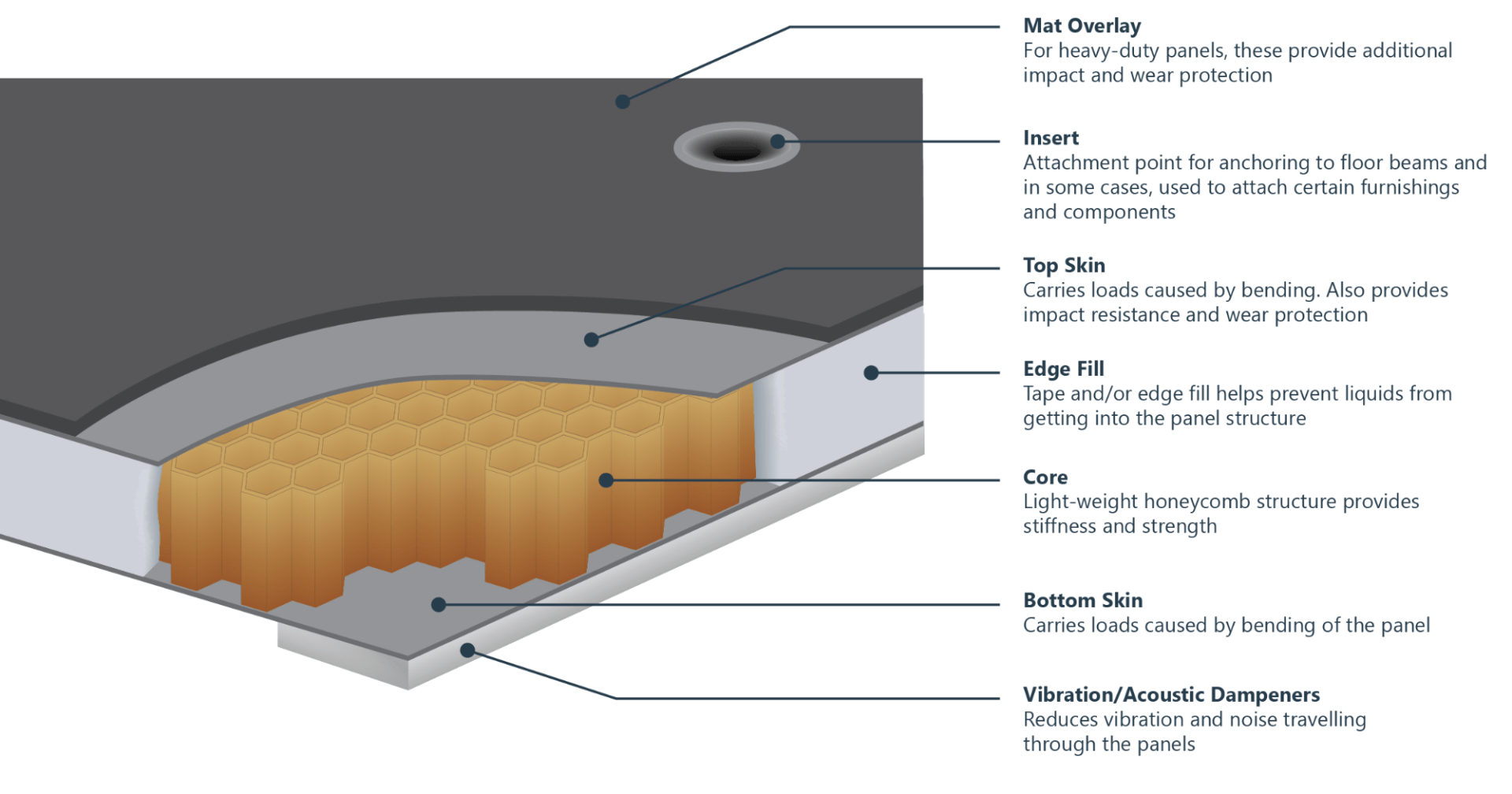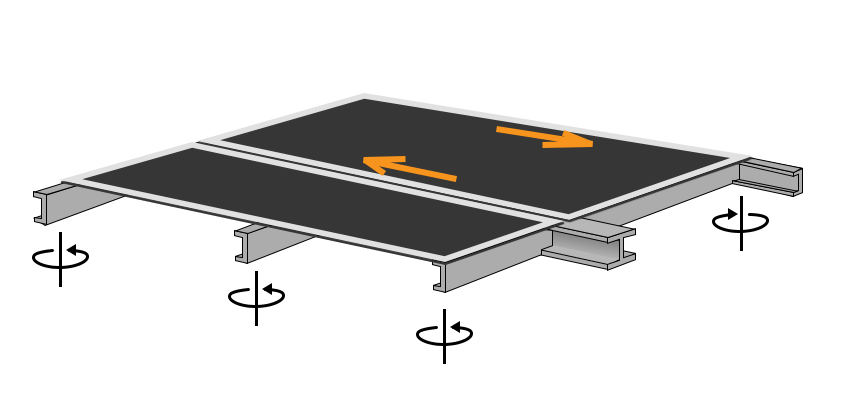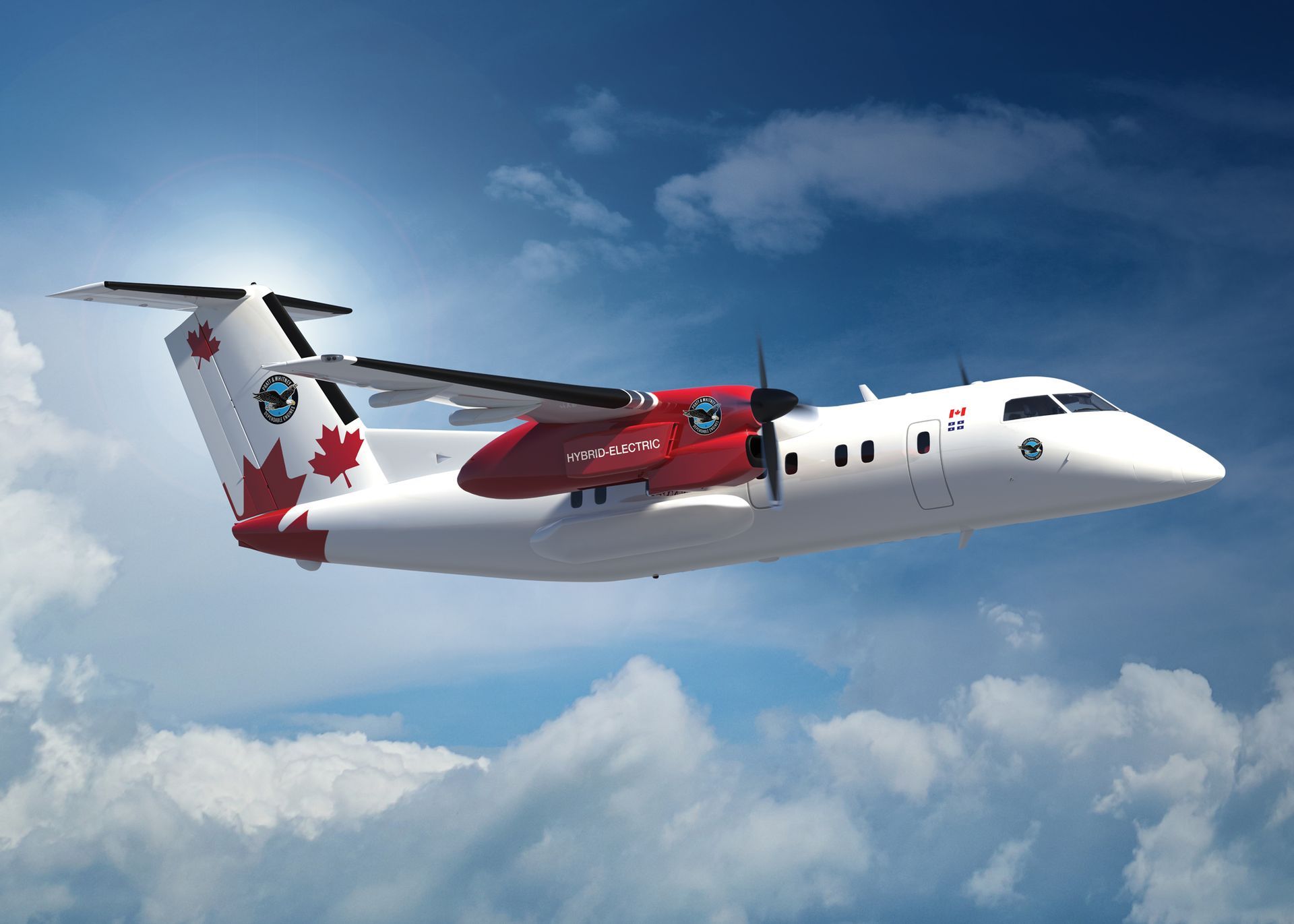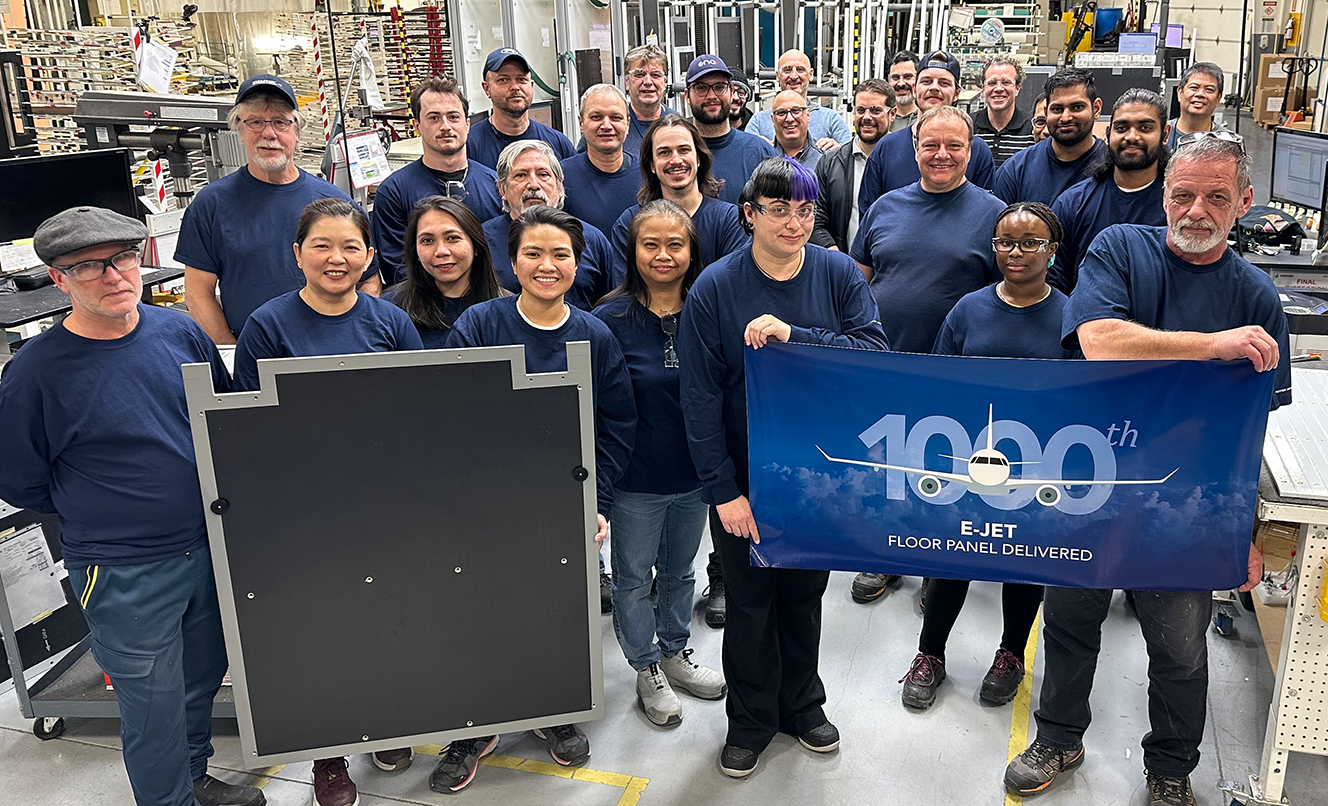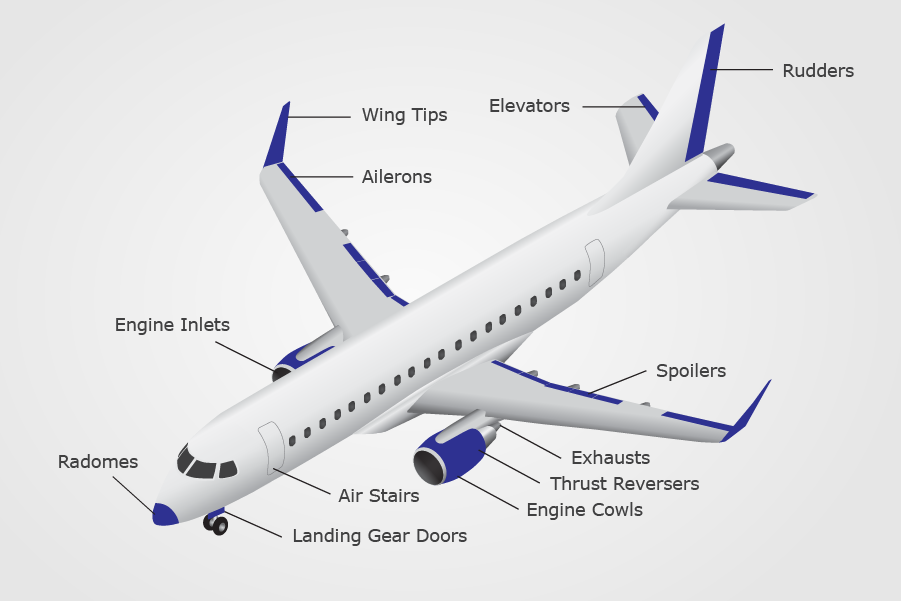They’re not simply sheets of honeycomb sandwich panel
Often overlooked as being a less glamourous part of any aircraft,
floor panels have an important role in more than simply providing a flat surface to walk on. They are a component of the aircraft structure, which means they play a role in the overall safety of an aircraft during normal operations, emergency landings and rapid decompression events. Modern panels may also include additional functionality that can provide benefits in conductivity and cabin configuration versatility.
Floor panels, sometimes referred to as floor boards, are mounted to the aircraft’s floor beams to provide a surface for passengers and crew to walk on and provide attachment points for certain furnishings and other components. They must be adequately strong and stiff to act as a supporting structure; durable to withstand use over time; light enough to help keep aircraft weight low; and in some cases, versatile to allow a variety of cabin configurations.
Floor Panel Construction
Most floor panels have common components, each adding functionality to the overall performance of the panel.
Panels are commonly fabricated from honeycomb sandwich panels with glass/carbon/epoxy faces and an aramid core. Inserts are installed in the panel to provide a means of attaching the panel to the airframe. Panels may have foam installed on surface areas to combat vibration, noise and in some cases provide a smoke seal to prevent smoke from entering the cabin. Some panels include edge fill, which helps prevent liquids from getting into the panel structure and reduce its durability.
Floor panels can be supplied in either standard or heavy-duty configurations depending on the application. For example, heavy-duty panels are often preferred for use in heavy traffic areas and cargo areas where the panels endure additional wear. These panels may have thicker cores, enhanced skins and/or an overlay mat for added durability.
The use of composite honeycomb sandwich panels in aircraft structures provides the advantage of lightweight material in combination with an array of beneficial mechanical and chemical properties including:
- Durability
- Strength
- Stiffness
- Impact and crush-resistance
- Shear strength
- Flammability resistivity properties
- Sound and thermal insulation
The specification to achieve these benefits must be carefully balanced to optimize performance-to-price goals. Designing a panel that exceeds strength and durability metrics is of no use if the panel system becomes too heavy or too costly to manufacture. Thus, the design requires a careful balance to produce the right panel system for each aircraft program.
The recipes that make up the design and specification of each panel is an area of expertise for Comtek. We have experience that goes back to the mid 1990s and we continue to develop new solutions for lighter weight, more durable panels.
Flooring is a Structural Part of the Aircraft
While extremely lightweight, floor panels are considered to be a structural part of the aircraft and are required to withstand a specified level of shear force in order to brace the floor beams of the aircraft in the event of crash. This is particularly important in lighter aircraft such as business jet platforms and regional aircraft, which have lighter under-floor structures than large commercial jets.
An often overlooked requirement of floor panels is to withstand loads caused by rapid decompression cases. In the unlikely event of cabin decompression, in the seconds between a loud “bang” and the oxygen masks dropping from the ceiling, the cabin has decompressed but the compartment under the floors is still pressurized. This causes an upward load on the floor panels that they must withstand while the pressure above and below the floor panels is equalizing. If the floor panels were to break under this load, they could cause injuries to the passengers, and a hole in the floor would make evacuation after landing more treacherous. This decompression load is in the opposite direction than the normal direction of loading of the floor panels, so the panels and the inserts that attach the panel to the aircraft structure need to be carefully designed to withstand loads in both downward and upward directions.
To the uninitiated, the strength of floor panels might seem excessive. Floor panels are typically designed for a certain floor loading (expressed in lb/ft2 or kg/m2). This floor loading reflects the maximum amount of "stuff" – people and cargo – that can be carried in the compartment. But airplanes don’t just sit idle; they maneuver, and they fly through turbulence. The maneuvering and turbulence cause accelerations that magnify the loads caused by the “stuff.” The ultimate load factor, which accounts for maneuvering and turbulence, plus a safety factor, can be above 9 g’s in some aircraft. Considering this load factor, an average North American adult (178 lb) would apply 1,600 lb to the floor panel – that’s about the weight of a concert grand piano plus two people playing it.
Aircraft floor panel load factors can be above 9 g's - meaning an average North American adult of 178 lb would apply 1,600 lbs to the floor panel, roughly the same weight as a concert grand piano plus two people
Additional Roles of Modern Aircraft Floor Panels
With increasing demand for choice, airlines are taking advantage of cabin configurations to differentiate from their competition and improve revenues with premium seating. Facilitating multiple configurations without changing panels requires panel design with the versatility to meet all configurations. This means more inserts, and typically more weight to the panel, and more areas of potential failure.
Another role, primarily used in business jets, is the need for floor panels to have high conductivity, which is needed to create an electromagnetic shield in the cabin. This allows the use of portable electronic devices in the cabin without interfering with the operation of the aircraft.
To meet these challenges, Comtek has developed lightweight inserts and a processing technology that consistently produces a high-strength bond between the insert and the panel that resists degradation from environmental effects. These lightweight inserts have since been incorporated on now-active aircraft programs and can be tailored to new applications. Comtek also has a high conductivity solution that far exceeds typical aircraft level EMC requirements.
Given the structural requirements of the floor panels in various loading cases, as well as the EMC requirements, inspecting floor panels in service and performing repairs according to the Component Maintenance Manual when required, or replacing with a new panel is an important part of ensuring that the aircraft remains safe.
Comtek is an expert in composite panel design and manufacture, producing light weight, durable panels for more than 25 years. If you have a project using a panel system, contact us to find out how we can help you develop the right solution.


